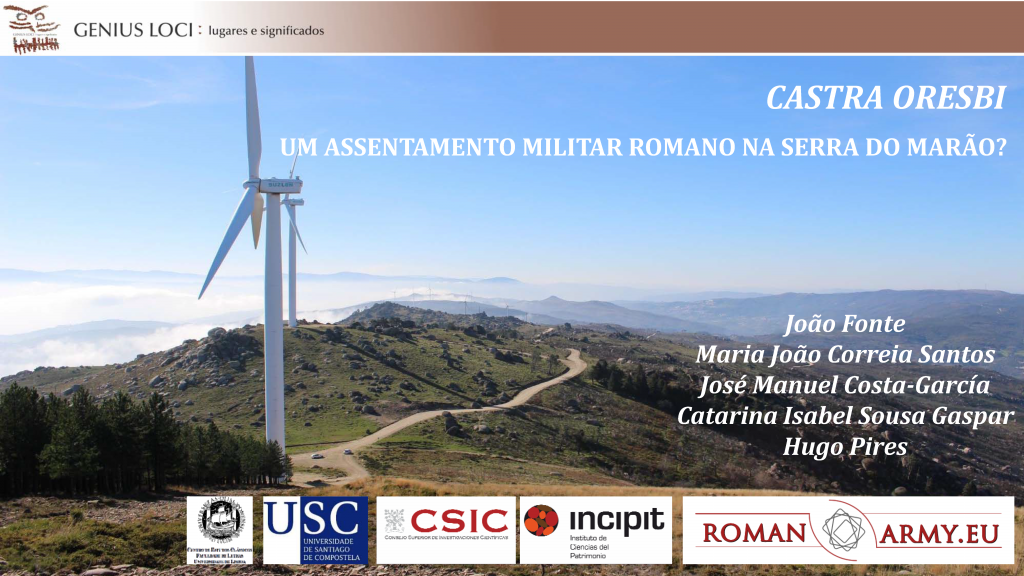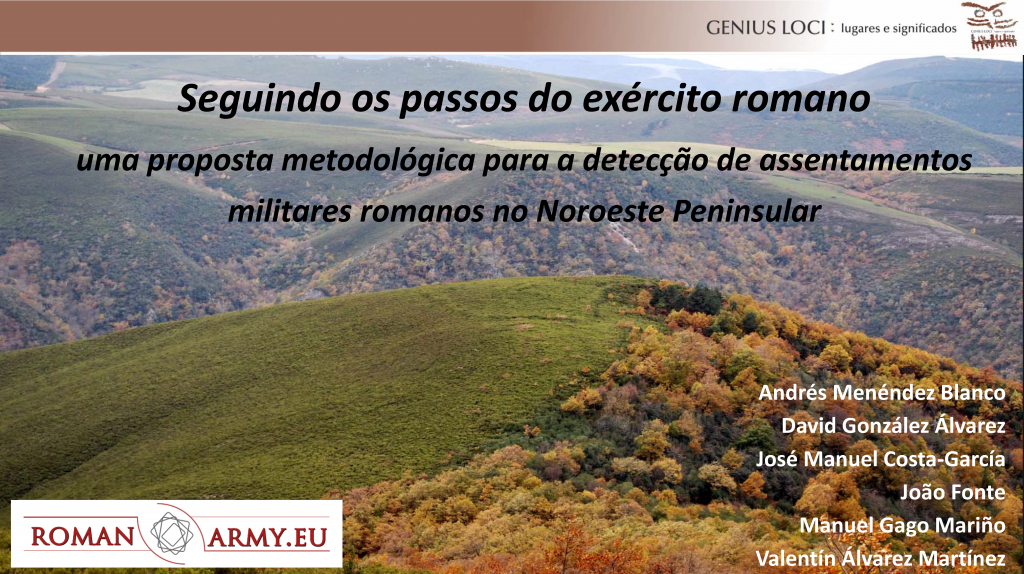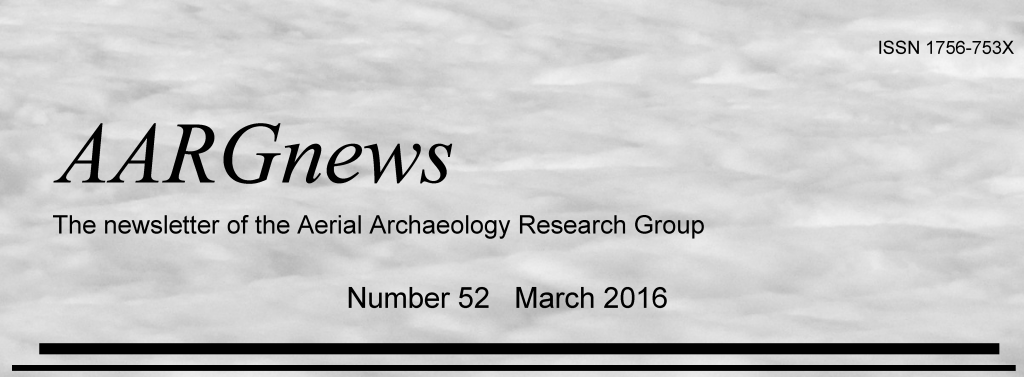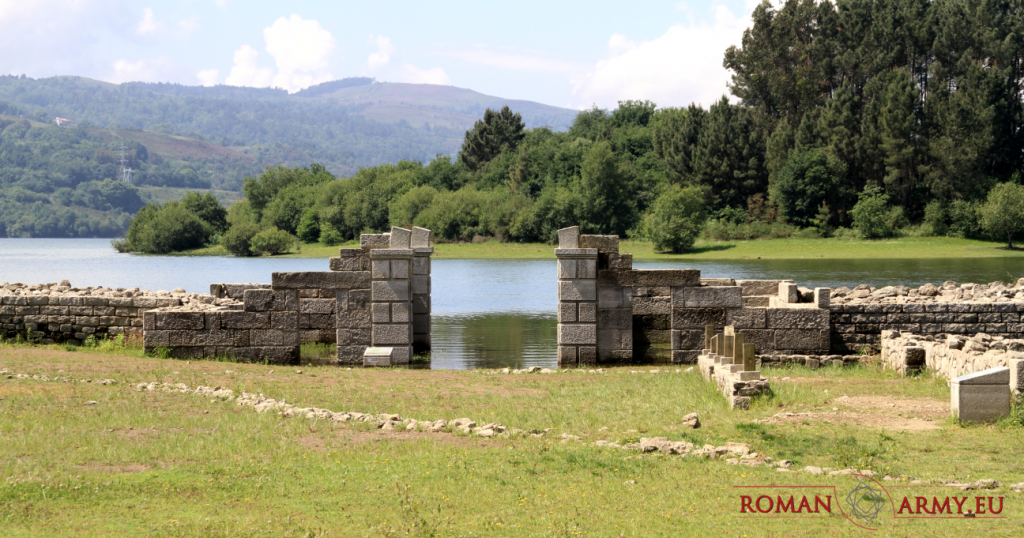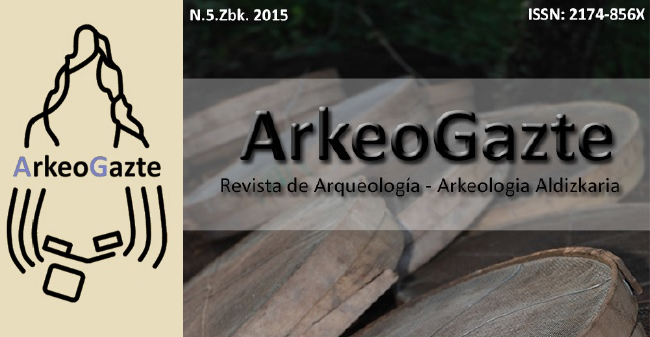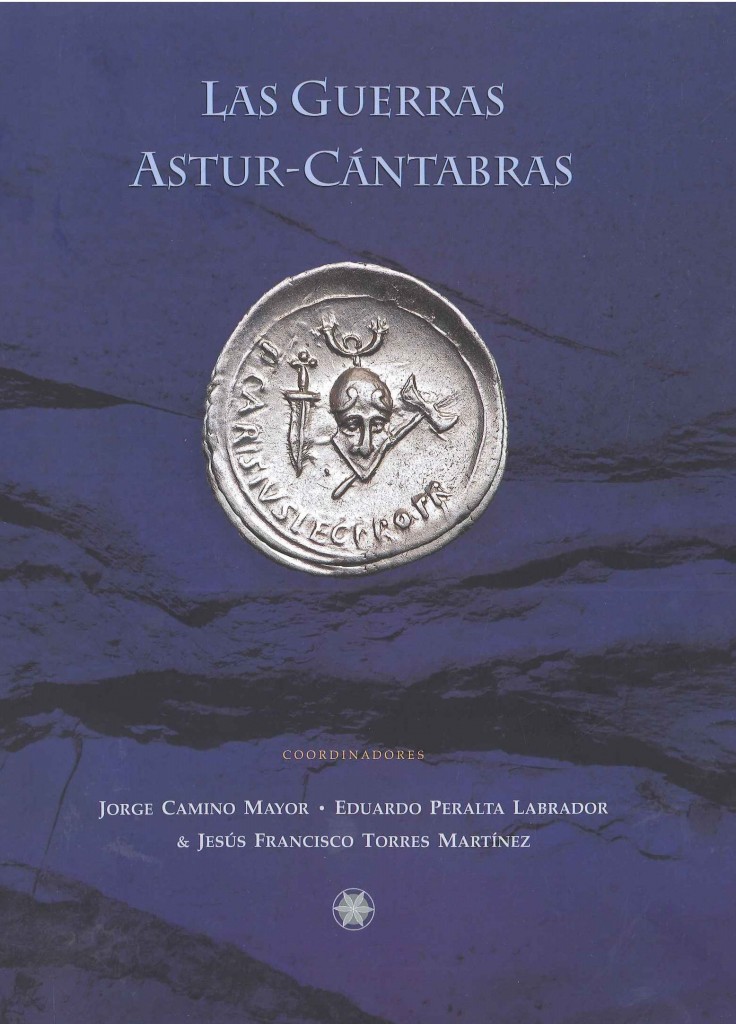Lino Tavares Dias and António Baptista Lopes stated the existence of a Roman military camp up in the very top of the Serra do Marão (Portugal). A rectangular enclosure and a stone tower would be the archaeological evidence sustaining that interpretation. This sugested Roman camp (the only one catalogued in Northern Portugal) was also identified thanks to an inscription carved over a rock located in the nearby: Castra Oresbi. However, the meagre archaeological evidence implied the to the refusal of this interpretation by some scholars (like C. M. Martins).
Following the footsteps of the Roman army: a methodology for the detection of Roman military settlements in NW Iberia
After concluding several research experiences in different areas of NW Iberia, we have assessed the potential and limitations of various techniques in a wide range of land types. The usefulness for archeological survey of those techniques has been totally attested thought an intense testing. In this paper, presented during the congress named Genius Loci: Places and Meanings, we show a methodological proposal for the detection and study of archaeological features related to the Roman military presence in these territories. Continue Reading
Flying over the Roman military sites
The last volume of AARGnews newsletter, edited by the Aerial Archaeology Research Group (AARG) includes a paper signed by all of us. We present a low-cost methodology combining historical and modern aerial photography, satellite imagery, airborne LiDAR, GIS and conventional archaeological field survey techniques. Likewise, it can be considered the international launch of the romanarmy.eu project.
A flooded archaeological landscape: Aquae Querquennae (Bande, Ourense)
5 June 1921. Spain attends with some somnolence to the escalation of violence that will lead to the famous colonial disaster of Annual. As expected, this situation resonates like a more distant echo in rural Galicia, where the only revolution are the sporadic but typical downpours of the last days of spring. However, the peaceful place of “A Cibdade”, located on the north bank of the Limia River, receives a rare visit. This time, not only the inhabitants of the close villages of Portoquintela and Baños de Bande come to dig the land, but also four particularly well-dressed figures are approaching. They are Ramón Otero Pedrayo, Florentino López Cuevillas and Vicente Risco, prominent Galicianist intellectuals from the capital city of Ourese. The fouth well-known person is Farruco Pena, a local lawyer.
A needle in an industrial park: the Campos camp (Vila Nova de Cerveira, Minho Valley)
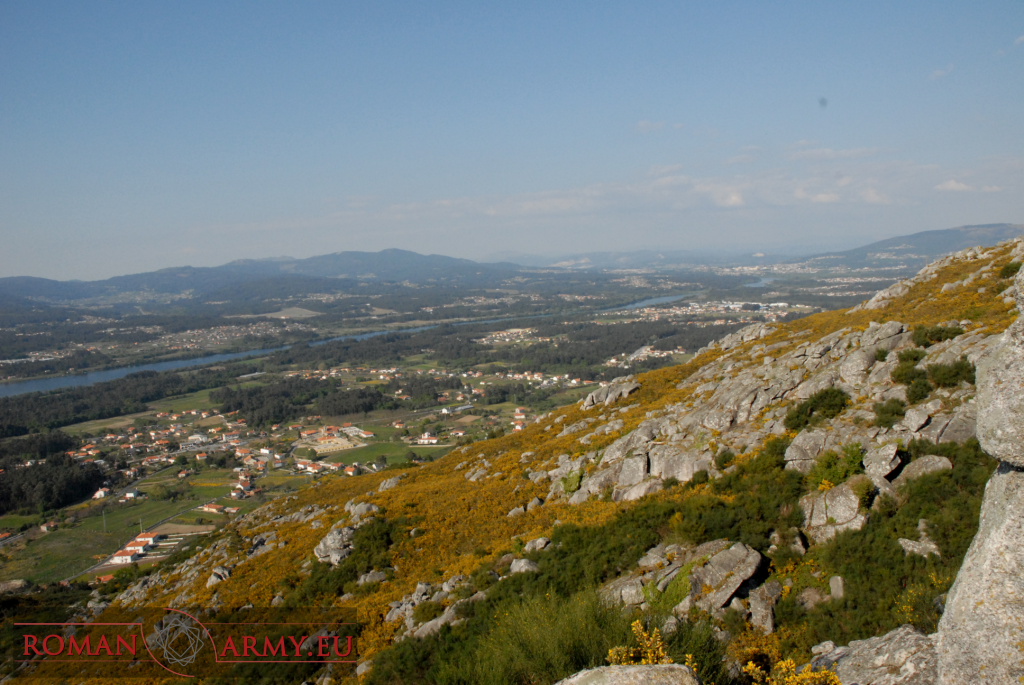
Campos is situated on the outskirts of São Pedro da Torre (Valença, Portugal), on the banks of the Minho River. Here, the Galicians built a star-shaped fortification, the fort of San Luís Gonzaga, during the Portuguese Restoration War (1640-1668). In order to cut the advance of these troops on Portuguese lands the Portuguese elaborated a strategy. As the chronicles narrate, they built a series of watchtowers and fortresses, equidistant from the fort’s by a cannon shot.
And today… a “sword-and-sandal” reflection
Today (02/23/2016) we take advantage of the launch of Santiago Posteguillo‘s “La Legión Perdida” –the last episode of the trilogy dedicated to Roman emperor Trajan-. This is a good opportunity to carry out a small reflection on the role played by the historical novels in popularizing the Roman army.
The Roman Camp of A Serra da Casiña (Valboa, León)
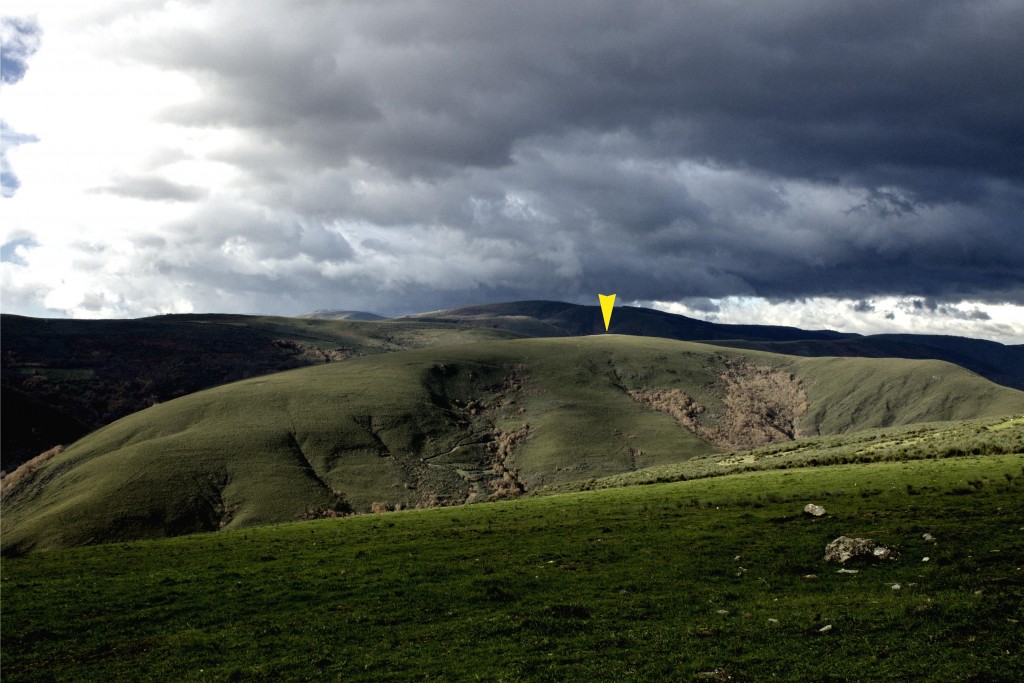
Alongside the paper of our colleague José M. Costa, the latest issue of the magazine Arkeogazte contains a work signed by some members of our team. There we present a preliminary study of a Roman camp or castra aestiua recently identified in the place known as A Serra da Casiña (Valboa, Leon).
Trying to deepen the study of the Augustan campaigns in Hispania
Since its very beginning the Spanish historiography has paid a great attention to the Cantabrian and Asturian Wars. From the end of the XXth century onwards, the development of the Roman military archaeology have brought a remarkable transformation of the studies on this subject. However, sometimes the modern analysis on this topic have been excessively positivist and they do not delve into the socio-political and cultural dimensions of the war.
The Roman camp of Moyapán (Ayande, Asturias)

The camp of Moyapán (Ayande, Asturias) was discovered by chance in 2007, as we analysed the aerial photographs covering one of the most important Roman mining areas of western Asturias. It was the second Roman enclosure recognized in Asturias after El Picu Curriel.los (L.lena/Ayer) and it led our way on the investigation of the presence of the Roman army in Asturias and León.
Released the book “Las Guerras Astur-Cántabras”
Last Thursday (17/12) was presented in Gijón/Xixón the book Las Guerras Astur-Cántabras. It contains the proceedings of the First Archaeological Meeting of the Asturian-Cantabrian Wars (held in Gijón/Xixón in October 2014), where several researchers presented the latest archaeological developments on the matter. Jorge Camino Mayor, Eduardo Peralta Labrador and Jesús Francisco Torres Martínez coordinate this volume and KRK ediciones is its publisher. Some of the sites by us located in recent times all throughout Galicia, Asturias and Leon are analysed in three papers.
